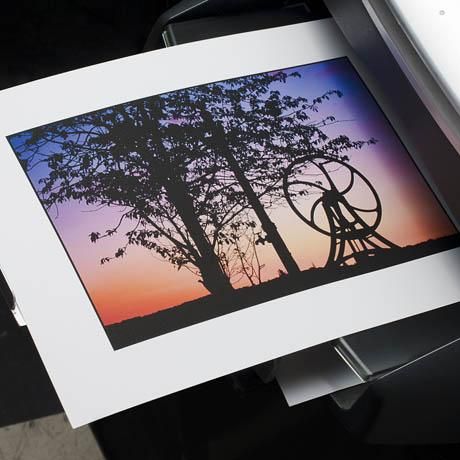
Paper is available in a multitude of sizes, from 10cmx15xm to A3 format (33cmx48cm) and beyond, not to mention rolls. Below is an overview of different paper types and their corresponding uses.
Handy tips
- Go for a high paper density (250-300 g/m²).
- Check the maximum thickness or density recommended by your printer manufacturer and never exceed this maximum, as this is liable to cause paper jams.
- Your printer uses dye-based inks: some colours will fade after 2-3 years. Therefore, avoid using high-end paper.
- Remember to pick the right paper type in the print dialog when setting the print going.
